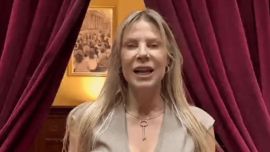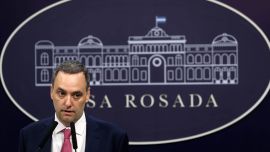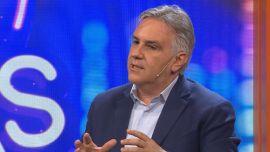Venezuela has been in recession for eight years, suffered four years of hyperinflation and endured a currency in free fall.
But the beleaguered bolívar has, against all odds, managed to stabilise since October.
It is thanks to a US$2.2-billion investment by the state in a bid to slow down inflation in the South American nation.
Last year ended with inflation at 686 percent – the highest in the world.
But that was a significant improvement on the 130,000 percent in 2018, 9,585 percent in 2019 and 3,000 percent in 2020.
According to consultancy Aristimuño Herrera & Associates, Venezuela's central bank has injected US$2.2 billion into the internal market in 2021-2022.
Banned for 15 years by the government, the US dollar was once scarce and highly prized, exchanging hands on the black market for significantly more than the official exchange rate.
Suffering a cashflow crisis, the government was forced to lift the ban in 2019.
'Can it be sustained?'
"Offering more dollars than there is demand generates stability in the exchange rate," César Aristimuño, director at Aristimuño Herrera & Associates, told AFP.
The bank has acknowledged 29 "interventions" since October 2021, although without giving details of the amounts.
Last October, the bank slashed six zeros off the bolívar – making one new bolívar worth a million old ones – with the government saying this would improve faith in the local currency.
At the same time, authorities imposed a three percent tax on foreign currency transactions and cryptocurrencies.
"The legal tender is and will continue to be the bolívar," Vice-President Delcy Rodríguez, who is also the economy and finance minister, told parliament.
Since October, the exchange rate against the dollar has moved from 4.18 to 4.32 bolívars, a depreciation of just 3.24 percent.
That compares favourably to the depreciation of 76 percent in 2021 and more than 95 percent in each of the previous three years.
After shrinking by more than 80 percent during eight years of recession, Venezuelan GDP grew by four percent in 2021, the government claims.
"Our economy is so small that such a policy can be applied. The issue is how long will they sustain it," said Henkel García, director at Econométrica.
Some experts fear that the government is "burning" international reserves but Aristimuño and García both say the dollars have come from an increase in revenues from Venezuelan oil due to rising crude prices and a limited increase in production.
State oil company PDVSA produced more than three million barrels a day in 2014 but that fell to 400,000 six years later.
It has now risen to 680,000 according to OPEC, the Organisation of the Petroleum Exporting Countries.
The central bank says it has US$10.8 billion in reserves, half the amount of 2014 and a third of the 2007 figure.
However, the bank is including US$5 billion provided by the International Monetary Fund to help mitigate effects of the coronavirus pandemic, but which has been withheld due to questions over the 2018 re-election of President Nicolás Maduro in a poll widely dismissed as a fraud.
'Collateral damage'
While the injection of dollars has beneficial effects, there is "collateral damage," said Aristimuño.
Since inflation is high and the exchange rate is stable, the dollar's buying power is falling.
Likewise, "exports are losing their attractiveness" compared to imports.
Carlos Fernández Gallardo, president of the FEDECAMARAS employers federation, said he is worried.
"There is an increase in dollar costs for producers, with a pernicious effect on the consumer," he told AFP. "What will happen if these dollars disappear?"
In 2018, the government attempted to tackle inflation by obliging banks to keep 85 percent of their reserves in the central bank in an attempt to limit the printing of money.
That served to reduce credit, which was already in free fall with the depreciating boíivar.
Venezuela is a credit minnow with less than US$140 million in 2021, compared to US$14 billion in neighbouring Colombia.
Aware that credit, investments and growth are intimately related, Caracas partially changed tack in February, allowing loans indexed against the dollar under certain conditions and reducing the obligatory reserves to 73 percent.
But the challenge remains, how to promote growth while keeping inflation under control.
related news
by Esteban Rojas, AFP


























Comments